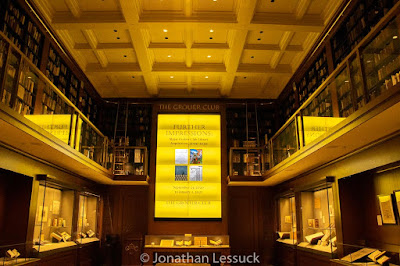The Grolier Club - Dedicated to book lovers everywhere

Grolier Club Library New York City is filled with places that celebrate lesser known or thought about aspects of history and industry. There are museums for almost everything. One of those places is the Grolier Club, which celebrates all things about books. The Grolier Club is a private club, dedicated to bibliophiles and lovers of graphic arts. It was founded in 1884 by Robert Hoe , a printing press manufacturer and book collector, along with eight other book lovers. Its mission is to foster the study, collecting, and appreciation of books and works on paper. The club maintains a a library dedicated to all aspects of books and graphic arts, with over 100,000 books about books; bibliographies; histories of printing, publishing and collecting; and catalogs of exhibitions and sales. The Grolier club promotes and encourages knowledge of books, making their library available for research, and maintaining galleries with where they hold exhibitions and events open to the public. When ...

